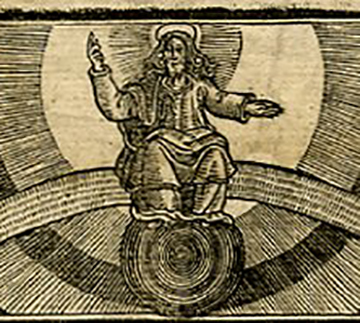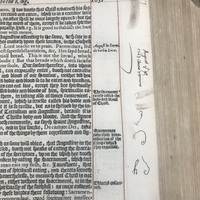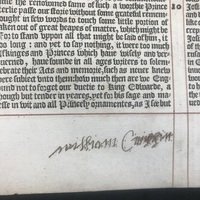Act 1: The Many Lives of Acts and Monuments
Books have their own secret lives — they live as ideas but they also live as objects. We are all familiar with how ideas in books can be connected to the lives of people, but we often overlook how much the life of the book as an object can get mixed up with our own lives.
Bibliography is the study of books as physical objects. The creation and use of books contain an history of human labour, but much of that history is lost to the erosive force of time and the limits of memory.
Alongisde our bibliographic methods is our consideration of the provenance of Acts and Monuments. Provenance involves determining the origins of an object or organism, but in terms of literary studies provenance refers specifically to the history of ownership of a particular item, especially in order to determine and document a work's authenticity.
In 2019, the human story behind the University of Victoria McPherson Library copy of the 1610 edition of Foxe's Acts and Monuments is nearly invisible within the historical record.
Yet, by applying the techniques of bibliographic analysis, we have been able to reconstruct moments within the hidden life of this book.
The Many Lives of Acts and Monuments is the result of four months of research into the marginalia, annotations, paratexts, and provenance of the 1610 Acts and Monuments.
Through this analysis, we have recovered a sense of some of the hands and lives through which this book has passed. These histories reflect the various roles Acts and Monuments has played in the centuries since it was first printed.
Here we will consider specific elements of the Acts and Monuments story:
- The motivations behind the man who printed the 1610 edition.
- Foxe's own statement to readers contained in the 1610 preface.
- The connection of this volume to 17th-century marginalized religious groups.
- A forensic reconstruction of a domestic scene captured in a series of doodles.
- The mystery of the owner whose bookplate was torn off the inside cover.
- Acts and Monuments' relationship to Freemasonry and Revolutions.
- The transformation from a book to be read into a book to be collected (and probably still read).
- The road that finally brought it to the University of Victoria McPherson Library Special Collections.
The Hands of Acts and Monuments
Below are examples of the various hands that have written, drawn, scribbled, and sketched in this copy of Acts and Monuments. Behind each of these annotations was a human being with their own life, their own ideas, and their own story. We will never be able to recapture all of that lost history but we have tried to record as much of it as possible.
Suggested Reading
- Genette, Gerard. Paratexts: Thresholds of Interpretation. Cambridge: Cambridge University Press, 1997.
- Williams, William Proctor and Craig S. Abbott. An Introduction to Bibliographical and Textual Studies, 4thedition. New York: Modern Language Association, 2009.
Section authors (unless otherwise indicated) Colin Keohane & Kirsten Schuhmacher








